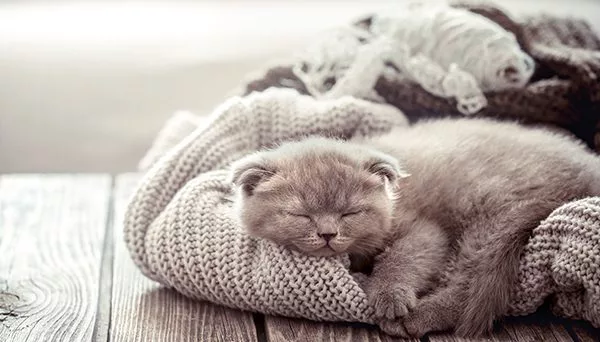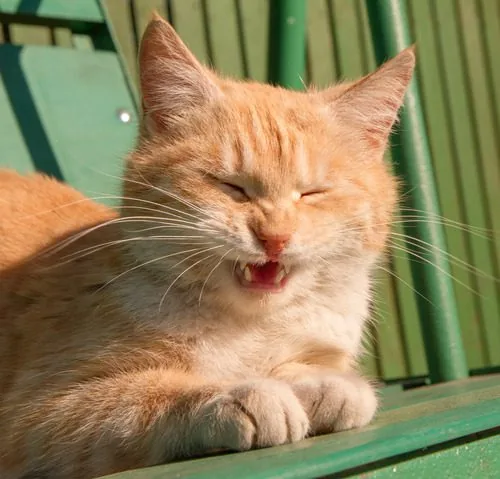Feline Leukemia: Symptoms and Treatments for Cats
Have you ever heard of feline leukemia? This disease is a serious and usually fatal condition that affects unvaccinated cats. If you think there is a chance your cat could have this condition, or if he has recently been diagnosed with feline leukemia, you will need to work closely with your vet to help your pet live comfortably.

In the article below, you’ll find more information about feline leukemia, including its symptoms and management options. Read on to learn more and find out what to expect if your cat unfortunately contracts this disease.
Frequent Diarrhea and Vomiting
Frequent diarrhea and vomiting are some of the most common symptoms related to feline leukemia. If your cat is in the early stages of this disease, diarrhea and vomiting may be the first symptoms you notice.
These symptoms can sometimes become very severe and can dehydrate your cat in a short amount of time.
Your vet may be able to give you some medication to help prevent or reduce vomiting and diarrhea in your cat. The vet may also recommend a healthy prescription food to provide your cat with enough nutrition and fluids even when dealing with severe diarrhea and vomiting.
Frequent Fevers
Feline leukemia leads to frequent fevers as a result of the infection your cat’s body is trying to fight off. These fevers may be low, or they may be somewhat severe.
Either way, frequent fever can easily lead to dehydration, especially in cats who have other dehydrating symptoms like diarrhea and vomiting already.
Talk to your vet about managing your cat’s frequent fevers. You may need to give your cat medication similar to Tylenol to bring down his fevers, or your vet may have other recommendations for helping your cat remain hydrated while his fevers flare up. Either way, you should follow your vet’s recommendation for your cat’s health.
Pale Gums
Pale gums are a symptom that is closely linked with dehydration. When cats are dehydrated, they may have pale pink or even white gums as a result. They may also have sticky saliva in instances where dehydration is severe. If your cat has pale gums, it is likely because he also has diarrhea and a fever.
Pale gums themselves cannot really be treated, but you can work with your vet to figure out how to manage the underlying symptoms causing pale gums.
You should provide your cat with as many opportunities for healthy hydration as possible throughout the day.
Weakness and Lethargy
Cats who are very sick with feline leukemia are likely to be weak and lethargic most of the time. Your cat may be unwilling or unable to get up out of bed very often, and he may engage in very little activity other than walking to and from his food, water, and litter every day.
You can help your cat manage weakness and lethargy by keeping all of his necessities close to each other in your home. Create a safe, comfortable, and secure place for your cat that has everything he needs within easy reach.
Frequent Secondary Infections
Cats with feline leukemia may be more likely to develop frequent secondary illnesses and infections. These can come in a variety of types, and almost any cat disease is potentially capable of infecting your pet when he already has such a serious underlying health condition.
You will need to take your cat to the vet every time he comes down with a secondary disease. This way, the vet can help you find the right treatment for the secondary problem, which in turn can help your cat’s immune system stay stronger for longer.
Trouble Breathing
As feline leukemia progresses, it eventually starts to cause trouble breathing. When your cat reaches this stage, he may not have much time left, and it’s important to talk to your vet about when euthanasia may be the best choice for your pet.
Cats who have trouble breathing due to feline leukemia cannot be very easily treated. Instead, you can simply make your cat more comfortable. Consider using a humidifier in the space where he usually sleeps, as this can help soothe his breathing while he’s resting.
Cut down on the activity for your cat as well, and try moving his food closer to his favorite sleeping spot.
Your Vet is Here to Help with Your Cat’s Feline Leukemia
Although there is no cure for feline leukemia as a whole, you can use the options listed in this article to help manage and treat the symptoms of this disease. Your vet will be able to give you more specific information to help your individual cat battle feline leukemia for as long as possible.
Remember, too, that the best treatment is prevention. You can prevent your cat from contracting feline leukemia by having him vaccinated against the disease and keeping up with booster shots as well.
Recent Posts
6 Possible Causes for Your Cat’s Sneezing
6 Possible Causes for Your Cat’s Sneezing Cats are known for their curious and playful nature, but…
Why is My Dog Eating Grass?
Why is My Dog Eating Grass? Dogs are known for their curious behaviors, and one that often…
Can Dogs Eat Marshmallows?
Can Dogs Eat Marshmallows? Marshmallows are a popular treat for many people, but pet owners often wonder,…
Can Dogs Get Sunburn?
Can Dogs Get Sunburn? As summer approaches and the days get longer, many pet owners look forward…
Dog Dehydration: Symptoms, Treatment and Prevention
Dog Dehydration: Symptoms, Treatment and Prevention Dehydration in dogs is a common but often overlooked condition that…
About Boughton Square Animal Clinic
Since 1979, Boughton Square Animal Clinic has served Bolingbrook, IL and surrounding communities as both a veterinary care provider and a devoted partner in treating your animal family members for life.






